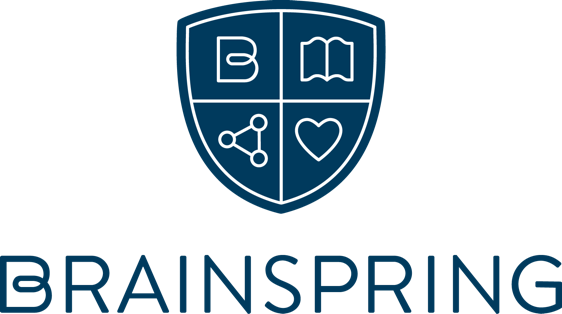Buy-in's, Research & Tricks to Motivate Students
Posted by Brainspring on 24th Jun 2021
I teach Structures in small groups and receive frequent questions regarding motivating students. How can you get a student struggling with reading, likely hates reading, and who has been in intervention for years to buy into the idea that "this year will be different?"
When I began to teach high school students in intensive reading, many of my students were at a second or third-grade level. They could not decode multi-syllable words, attack complex text, or decipher complex vocabulary. Many had been in intervention for 11 years. The accepted intervention for high school students, and many today, was to teach the standards. I was to provide my students with scaffolded instruction to comprehend 11th-grade text. There were a few problems with this school of thought.
1) My students had great coping strategies. When reading a text aloud, they could meet the standards.
2) They couldn't decode the text.
3) No matter how many times I taught a standard and how much I scaffolded it unless they could pull the words from the page independently, they would never comprehend an 11th-grade text.
Below are four ways I motivated my students and helped them truly believe that this approach would be different.
Buy-in
The most difficult but critical element for reaching older readers is buy-in. I had to convince my high school students, upper elementary students, and middle school students that I had the key to what they were missing. I have yet to meet an older student who struggles to read that does not understand that they are struggling to read. They know it is critically important that they develop that skill.
Research
At the start of every year, I discuss a little bit of brain research with my students. I tell them about dyslexia, and that not all of them have it. I share research, in simpler terms, of Shaywitz, Kilpatrick, and Dehaene (among others). I reassure the students that the fault lies in the wiring of their brains, not their innate intelligence. Most importantly, I assure them that I also know the key to rewiring. The key is a multisensory, cumulative, direct instruction, phonics program – like Structures, and following it with fidelity.
With most of my students, I begin syllabication early. Usually, in Structures, the Block 1 skills are review and can be accomplished quickly. I move into Block 2 and teach my students the beginnings of reading multi-syllable words. For students, understanding that reading is a series of predictable patterns and not simply a game of guess and check is a relief. Working with Greek and Latin roots, learning complex "SAT" vocabulary helps them to buy-in. Once I get buy-in, my kids will usually "go along" with whatever I ask them to do. Goofy multisensory activities? Sure. Write in the sand? Sure. Read nonsense words? Sure. They come to understand that I am the expert and will guide them to success.
Tricks for Motivation

While I am still working on credibility, I do use all of my best teacher tricks for motivation. I encourage students constantly. I give high fives, praise, and celebrations for even the most minor levels of success – reading unknown words, spelling a multi-syllable word, writing an entire dictation sentence. Additionally, I frequently use rewards. I am cheap, though! I reward my students with a Skittle, or just a few. I have students bring new and exciting words each day for the opportunity to share their genius with the class (and a Starburst). I rewarded my high school students with scratch-and-sniff stickers. They were a big hit! I have my students use colorful pens and markers to write on text or do dictation.
Building Relationships
Throughout all of the class, though, I believe nothing goes as far in educating students, whether in reading or any other subject, as building a relationship. I care about them, and they know it. I greet them by name when they walk into my room. I talk to them; I listen to them; I am honest with them. I will also call parents and hold them accountable because I care about their success now and in the future. That relationship building has helped me convince many students that they can do anything they set their minds to!
There is no simple solution for motivating students. It is a combination of daily effort, belief, and knowledge. It is, however, worth the struggle.
Written by Cheryl Garner
Cheryl is a Brainspring Master Instructor, Certified Dyslexia Specialist, and Nationally Board Certified Teacher. She has taught at the elementary, middle, and high school level, and is currently an Interventionist for 7th & 8th-grade students.
Brainspring has proudly supported the educational community for more than 25 years.
Our Educator Academy provides educators in grades K-12 with comprehensive MSL Professional Development courses. Learn more about our in-person and online professional development.
The Learning Centers support students through one-on-one, multisensory tutoring sessions. Learn more about our in-person (available in Southeast Michigan) and nationwide online tutoring.

